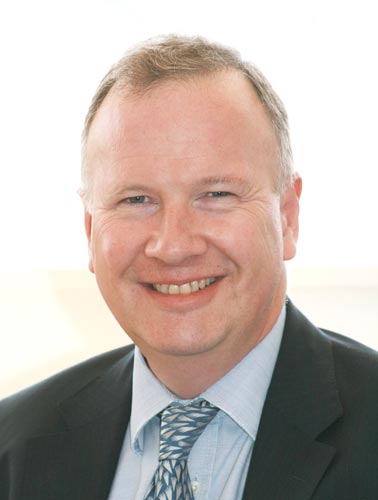Implications of the Vickers Report for Management Information in Banks
Implications of the Vickers Report for Management Information in Banks
Published by Gbaf News
Posted on June 13, 2012

Published by Gbaf News
Posted on June 13, 2012

Though we are all aware of the fact that there are scores of companies that buy stock imagery, things are changing as many companies are paying people for images they click with your cameras, smartphones or tablets.
If you want to earn a few bucks quickly and you are wondering how to make money with pictures, then you need to scroll down and know about the top websites that are worth checking out.
This app helps android users and Apple users to make money with pictures as it is available for iOS and Android. The best thing about this website is its variety of photo enhancing filters. The pictures are sold in partnership with Getty Images.
You can earn 5 bucks easily when you sell photos via this website. The approval process depends largely on your ratings as a member. Each time you upload a new photo, you will need to rate images with other members. This ensures that every member has a rating. The more positive ratings you have, the higher would be your chances of approval.
Most people have heard of Alamy as reputed newspapers, publishing houses and magazines buy images from this platform. It has an app called Stockimo that allows you to make money with pictures by letting you upload pictures clicked via a mobile device. This website is meant for class photographers as you can get up to 500 dollars for a picture. The average sale price is about 90 dollars and a photographer gets flat 20 percent fee for any photo that’s sold. You are also free to sold the photos repeatedly if you are willing to go through the approval process again and again.
This website pays you 20 percent of each picture that earns money. The price of each picture is decided by the company, and the charges are usually based on the size of the photo. The minimum price claimed by the website is 10 dollars.
This website mainly caters to websites that are looking for photos of a specific nature. If you seriously want to work hard to sell your photos, then this assignment-based website is perfect for you. When a request comes, you submit photos to fulfill the request, and the person/company that raised the request chooses the photos he or she likes. This app is available for Android and iOS.
If you want to make money with pictures and don’t want to go through a lot of legal red tape then you should try the mobile app known as Clashot. It allows you to upload any picture you want. The ones that get approved are put up for sales. The ones that don’t get approval still get visibility online.
This app is a bit complicated as the photos you upload here get ranked, and there are some exclusivity deals as well. The payment system is quite generous as you get to earn anywhere from 20 percent to up to 60 percent for the photos that were uploaded by you and sold.
Now that you know about the websites/apps that help you make money with photos, you should learn to target specific niches that are underrepresented in order to ensure that your pictures sell quickly.
CAMRADATA, a leading provider of data and analysis for institutional investors, has launched a Private Markets Database giving investors who are looking for more diversification in their investments access to a new private markets screen within CAMRADATA Live.
CAMRADATA Live enables asset managers to showcase their strategies and allows institutional investors and investment consultants to analyse them all in one easy place.
Over 2,500 investors and consultants use the portal to search and analyse nearly 6,000 investment products offered by more than 700 asset managers.
Now clients can search in eight private market categories – allowing them to make more informed investment decisions. These categories include: Commodities, Infrastructure Debt, Infrastructure Equity, Natural Resources, Private Debt, Private Equity, Real Estate and Real Estate Debt.
Sean Thompson, Managing Director, CAMRADATA said, “This is an exciting time for CAMRADATA. Not only have we seen our business expand into Europe, MENA and Asia, but this year, we have also been busy developing new services to give our clients even greater value and insight. Adding private markets to CAMRADATA Live further enhances our market offering.
“Increasingly, investors are seeking alternative investments to achieve greater yield and portfolio diversification. Private markets have seen tremendous growth in recent years and we’ve launched this new facility in response to client demand and interest in these types of assets from the institutional investor.
“We encourage investors who are not currently using our online manager research platform, CAMRADATA Live, to get in touch, as it would provide them with a wealth of information at no cost. Investors will be able to take full advantage of the range of opportunities and strategies in traditional asset classes and now private markets as well, with the confidence that they have robust, up-to-date information at their fingertips,” adds Mr Thompson.
For more information on CAMRADATA visit www.camradata.com.
For the updated rating report, click here.
Switzerland’s credit profile reflects its exceptionally strong fundamentals, low levels of debt and sound fiscal management.
Switzerland furthermore benefits from a strong external position, effective financial policy settings and highly developed capital markets, underpinned by the safe-haven status of the Swiss franc.
The Swiss currency however constitutes a potential source of economic uncertainty. The depreciation of the franc against the euro at end-2017, alongside strong external demand, drove the economy’s buoyant growth in the first two quarters of 2018 at 3.2% YoY. In line with the Federal Government’s and IMF’s estimates, Scope expects GDP growth of 2.4% for 2018 due to the continued strong performance of its main trading partners and robust domestic demand, supported by investment and favourable labour market trends, before flattening out to 2.0% in 2019, as the global economy slows down.
The main risks to future growth stem from international trade tensions and regional political uncertainty, which could create renewed safe-haven pressures on the Swiss franc. This has been amply demonstrated in the past, triggering the SNB’s heavy currency intervention leading to a quadrupling in the size of the central bank’s balance sheet since the financial crisis.
On the domestic front, Swiss banks’ exposure to real estate, with mortgage lending accounting for around 85% of total domestic bank lending, is a source of potential economic instability given elevated household loan-to-income ratios, up 10 percentage points since 2013 to around 50% in 2017. Risks are somewhat mitigated by Swiss households’ ample financial assets, amounting to 370% of GDP.
In addition, while Scope is confident in continuing constructive relations between Switzerland and the EU, also with regards to concluding a new bilateral framework agreement, two key potential strains could emerge, given:
Scope currently rates Switzerland at AAA with a Stable Outlook. This publication does not constitute a credit rating action. For the last credit rating action release, click here.
LOM architecture and design has been selected to design a state-of-the-art facility that will be Santander’s new world-class digital hub workplace facility. Located in Milton Keynes, the new complex is anticipated to open in 2022, subject to planning, and is expected to accommodate over 5,000 employees.
Santander are the leading employer in Central Milton Keynes.
The brief called for a workplace campus that would foster an agile, sustainable and innovative workplace for the future, reinforcing Santander’s global reputation as ‘the best bank to work for’.
LOM’s winning concept for developer Osborne and Co envisages an entirely new typology of office building for the banking sector, creating a stronger sense of community for Santander staff and a stronger identity for the bank within the wider Milton Keynes community. The campus will provide a sustainable future for the bank, both environmentally and economically. The new digital hub will support and foster collaboration and growth, while reinforcing the reputation of Milton Keynes as a centre for tech innovation. LOM’s design aims to increase permeability and access through the building and the site.
The ground level is conceived as an open, fluid, publicly accessible and flexible space that can be reconfigured and ‘curated’ to suit changing requirements. The design concept proposes a community ‘destination’, where pedestrian activity is enlivened by ‘pop up’ retail units – creating a vibrant and attractive environment for both bank staff and the wider community.
The new building will support health and wellbeing, including a fitness centre, cycle storage and a restaurant and café offering healthy food options. The working environment is informed by a biophilic approach – maximising natural light and ventilation to enhance air quality and encourage direct connections with nature. A sequence of three naturally-lit, connecting atria feature imaginatively planted linear gardens. The upper floors of the building offer flexible workspace arranged around these internal atria.
The proposed site occupies a prominent position opposite the station square and is immediately visible on arrival into Milton Keynes by train.
Nathan Bostock, Chief Executive, Santander UK, comments: “We are excited to be sharing our proposals for this major investment in Milton Keynes, reflecting our long-term commitment to the local area. We want a workplace which truly reflects our culture and our vision for the future, which is based on innovation and harnessing new technology to make banking simpler and more personal for our customers.
“Milton Keynes is already one UK’s leading technology hotspots, and with the new MK:U university on the horizon, we believe it is set to become an even greater magnet for technology talent. Our proposed new campus will give us a world-class home in Milton Keynes, which both our colleagues and the local community can take pride in.”
Richard Hutchinson, Director, LOM, adds:
“Conceived as a ‘compact campus’ Santander’s new digital hub will create a state-of-the-art workspace, offering flexibility and encouraging community engagement through innovative design and place making.”
Conor Osborne, Director, Osborne and Co, adds: “We are naturally delighted to have been chosen as Santander’s development partner. Its new UK digital hub in Milton Keynes will set a benchmark for large scale developments in this country – and we are excited to build a world-class facility tailored exactly to their needs.”
Guy Wellings, Project Director, WSP says: “With the future in mind for Santander’s new Digital Hub in Milton Keynes, we have thought meticulously about all areas of the engineering, transport and environmental practices of the building in order to provide a smart, sustainable, connected and structurally unique work space that promotes an innovative and contemporary identity for Santander. We look forward to preparing for the next stages and continuing the exciting transition to the new culture of future workplaces.”
Subscription model complements perpetual licensing option;
Professional Services maximise investment in information capture;
New desktop scanners deliver embedded image processing at lower price point.
Alaris, a Kodak Alaris business, is expanding its portfolio to provide several convenient and affordable new options for purchasing its award-winning information capture solutions.
Alaris Capture Pro Software and Alaris Info Input Solution are now available as one-year subscriptions in addition to existing perpetual licensing options.
Affordability is the key benefit to customers. According to a survey conducted by IDC[i], the acquisition cost of solutions is the largest hurdle for businesses to clear when automating document-based workflows. A subscription model offers a lower barrier to entry. Customers can pay as they go and align spending with usage of the software instead of investing in a large upfront capital purchase.
An added benefit is that subscription-based pricing gives customers the flexibility to scale up and down based on needs of the business. “Alaris is committed to support clients who choose traditional perpetual licenses as well as those who prefer a subscription-based model,” said Don Lofstrom, President & General Manager, Alaris, a Kodak Alaris Business.
Extending the advantage with Alaris Professional Services
Professional Services are designed to extend the advantage of owning a scanner from Alaris. Alaris analysts, consultants, and trainers have a wealth of image science expertise and are committed to delivering technical and operational support to help customers plan, upgrade and optimise their document capture solution.
Alaris Professional Services include:
Alaris Professional Services are commercially available in the US & Canada and EMEA regions now and will be available in other regions in the coming months.
Alaris Tiered On-Site Services deliver productivity and peace of mind
Repair and maintenance service is one of Alaris’ distinct competitive advantages. New Tiered On-Site Service plans are tailored to maximise investment while providing customers with more clearly defined options so they can select (and pay for) precisely the level of service they need.
“Our field and remote service team is constantly training to address the needs of well over 100,000 Alaris and OEM scanners across the world,” said Lofstrom. “First-time fix rates greater than 91% means our image science experts not only fix it right, but do so with the minimum interruption to our customers’business. Alaris is ISO-9001 certified and we only use genuine repair parts. Our unique ability to serve customers around the world with responsiveness, technical accuracy, and professionalism is unmatched in the industry.”
Award-winning scanners underpin the IN2 Ecosystem
Alaris is expanding its award-winning S2000 Scanner line with the addition of the Alaris S2040 Scanner. With a list price of £576, the new 40 page-per-minute device delivers all the embedded image processing power of the S2050 and S2070 Scanners at a lower price point for customers who want a more affordable option. The S2040 features the latest Alaris Perfect Page technology and is bundled with Smart Touch Software. It also supports the Alaris Passport Accessory and the Integrated A4/Legal Size Flatbed Accessory.
“The Alaris S2040 Scanner offers fast and reliable scanning, versatile media handling, and intelligent, automated features to simplify scanning and optimise business processes,” said Lee Davis, Editor for Scanners and Solutions at BLI. Earlier this year, Alaris won Buyers Lab’s prestigious Scanner Line of the Year Award for an unprecedented third consecutive year. “Alaris continues to set the standard for what a scanner needs to be in the age of digital transformation,” said Davis.
[i]IDC White Paper, sponsored by KodakAlaris, Automate Your Information Capture Workflow, August 2017
Denmark’s second largest insurance company now has deep insight into the end-user experience, proactively resolving issues before they occur
Nexthink, a leader in digital employee experience management software for enterprises, today announced that Topdanmark A/S, a leading Danish insurer, selected Nexthink to increase the visibility of its IT environment.
Nexthink helps Topdanmark A/S improve incident reduction and resolution while optimising service delivery and cost savings. Using Nexthink, the organisation’s IT team now has a real-time picture of its applications and services, greatly improving the quality of services provided to the organisation’s 2,450 employees.
As a leading insurance business, Topdanmark A/S has a significant technology footprint consisting of over 3,700 devices. Prior to Nexthink, the organisation’s IT team used a homegrown script-based solution to monitor device performance, which led to time-consuming and labor-intensive investigations, as well as occasional crashes.
Søren Wagner, IT Architect, Topdanmark A/S, commented: “Our main goal at Topdanmark A/S is to help our customers take care of their insurance and pensions. To make this a reality, the IT organisation’s primary concern is ensuring employees have a top-notch digital experience. Prior to adopting Nexthink, a browser crash forced us to rethink our digital experience strategy. We realised that we should focus on monitoring the end-user experience for improved outcomes.”
Thanks to Nexthink, Topdanmark A/S now has data from every device such as desktops, laptops and virtual devices readily available. This means the team can now analyse, visualize and act in real-time across all end-user computing data, proactively detecting and correcting issues at their source.
An important goal for Topdanmark A/S was to reduce downtime for the organisation’s employees. Due to the improved visibility of its IT real estate, the business’ IT team can now discover critical device and user information instantly, verifying that critical systems are running. This helps deliver faster IT incident resolution, ultimately driving better employee experience.
Wagner added: “Nexthink has changed the way we work as we are now able to leverage real-time data from its comprehensive dashboards early on in our conversations with the business. This has resulted in better service provisioning, as well as improved decision-making which is now based on facts instead of subjective input.”
Apps are not only meant for playing games or editing your pictures. Many useful apps can help you plan your budget and save money.
Sounds interesting? Scroll down to read about easy to use apps that help you save money.
If you often miss paying the bills on time because of your busy schedule, then this app is meant for you. It will allow you to keep the due dates and amount totals in one place only. You will also get notifications for pending payments, and due dates will be highlighted on the calendar to let you view all the payment dates easily. Bonus, its password protected.
This app is meant for people who prefer to stay within the budget limits. It tracks all the financial accounts from different accounts and records as well as categorizes every transaction smoothly. It also notes your spending habits and creates a budget for you. This app allows you to deactivate access from the phone through the Mint website which will come handy in keeping your data secure.
This app is best suited for people who want to find great deals and discounts at stores like Best Buy, Macy’s Target, etc. You can earn points for different purchases, inviting friends to join and just for walking into a store. The points you earn can be transformed into gift cards at stores that are partnered with it.
This app lets users earn real money for shopping. You can start by going through varied offers in the product gallery and selecting the ones you want. Every time you finish a task like taking a poll or watching a video, the pending cash is added to the account which can be accessed when you buy the products from retailers who are partnered with Ibotta. After the purchase is verified, cash can be added to your PayPal account or turned into a gift card.
Well, what we like best about this app is it’s to the point name. This app has an easy to use interface that’s highly detailed. The software operates by following four simple rules, save for a rainy day, give every dollar a job, live on last month’s income and roll with the punches. The app will change the way you manage money and will make finances stress-free.
If you often spend hours in looking for relevant and latest coupons, then this website is for you. It allows you to seek deals and coupons from popular stores like Starbucks, Sephora, J Crew, Forever 21 and many more. The coolest thing about this app is that it saves you from the hassle of printing the coupons. All you need to do is to show your phone to avail a deal. You also get notifications for expiration dates so that you can do that last-minute shopping before the deal ends.
Last on the list is SnipSnap, another coupons app that allows you to find the best deals with various brands. It also allows you to take pictures of printed coupons and transforms them into digital and mobile-ready versions. You are also allowed to peruse through an online directory and see coupons your friends have snipped. How cool is that!
Inviting applications from OTC Derivative ISIN users to encourage wider participation in the development of the DSB Road Map
The Derivatives Service Bureau, founded by the Association of Numbering Agencies (ANNA) to facilitate the allocation and maintenance of International Securities Identification Numbers (ISINs) for OTC Derivatives, has today announced plans for broader industry representation within the DSB’s Product Committee, and is now inviting applications to participate.
From 8th January 2019, representation will include two new categories, custodians and data vendors, to expand on the existing buy-side, sell-side and trading venues, thereby increasing voting members from 9 to 15. Participation is also open to trade associations as non-voting members, as well as ensuring a balanced representation of asset class knowledge and geographical representation. This latest DSB announcement reflects increasing industry participation in the DSB, and calls from within the industry to be involved in developing the DSB ISINs Road Map.
Emma Kalliomaki, Managing Director of ANNA and the DSB, said, “Being a global utility with widespread industry representation, expertise and collaboration at its core, the DSB is committed to the use of standard identifiers to make the OTC derivatives market a more stable environment within which to trade. Having broader industry participation on the Product Committee to discuss the best possible ISIN creation and use will only serve to bring greater transparency and efficiency to the OTC derivatives market.”
Malavika Solanki, a member of the DSB Management Team, said, “Working successfully with industry over the past eighteen months, the DSB has produced a fully automated open and easily accessible near-real-time allocation of ISINs for 82 product templates. By expanding the composition and structure of the Product Committee and including trade associations in discussions, the DSB can continue to remain agile and flexible as industry’s use of the DSB service evolves. Some examples include additional use cases, hierarchies for ISINs and the creation of proprietary ISINs.”
From 2019, Product Committee discussion will move from developing ISIN products and defining product templates, to solving additional OTC Derivative ISIN use cases and examining the introduction of hierarchies, as well as discussions on what to prioritise. The DSB values representation on a fair and equitable basis within the ISIN user community, and so will be allocating voting participation with 3 representatives from each sector.
The existing Product Committee was constituted for a 2 year period, and this will dissolve at the beginning of January 2019, to be replaced by the new Product Committee. Please follow the links for more details about how to apply and to view a copy of the new Product Committee charter and download the application form. Interested OTC Derivative users of ISINs have until 2nd November this year to put in their applications, with new Product Committee details being announced on the 4th December.
The UK Treasury Select Committee’s conclusion that crypto-assets should be regulated demonstrates cryptocurrencies are part of mainstream finance and the sector is likely to rally as a result.
This is an observation from Nigel Green, founder and CEO of deVere Group, which launched the exchange app deVere Crypto earlier this year following a unanimously-agreed report by the Commons Select Committee on crypto-assets for its Digital Currencies Inquiry.
The report concludes: “Regulation [is] needed for…crypto-asset market” and that the “ambiguity of the UK Government and regulators’ position is clearly not sustainable.”
Mr Green affirms: “Cryptocurrencies are here to stay. In fact, in today’s increasingly digitalised, globalised world, demand for these digital, global currencies is only set to soar in the coming years.
“As such, I welcome the Treasury Select Committee’s proactive and progressive approach, which could be the first step to providing regulations to protect consumers and prevent illicit activity.
“The conclusion made by the Committee about cryptocurrencies puts them on the right side of history. Its findings that these assets should be brought into a regulatory framework demonstrates once again that they are now a part of mainstream finance.”
He continues: “As I have said previously, regulation of the crypto sector is now I believe inevitable.
“Regulation of cryptocurrencies will give investors even more protection and, therefore, confidence in the burgeoning market is likely to drive prices higher – and today’s signal from the Treasury Select Committee could have the same effect.”
This Inquiry follows the Financial Stability Board (FSB), the international watchdog chaired by Bank of England Governor, Mark Carney, releasing a report in the summer that concluded Bitcoin and cryptocurrencies do not pose a risk to the global financial system.
The Investx platform will allow established SMEs to access new sources of equity-secured funding to fuel growth
Investx today announced the appointment of Richard Chambers to its board as Chief Operating Officer.
Richard brings a wealth of experience from HSBC Leveraged Finance and Royal Bank of Scotland Corporate Transactions and over 14 years he has secured over £500 million in bank funding for private equity backed small and medium-sized enterprises (SMEs).
SMEs are considered the powerhouse of economies, however the growth of these established businesses is often constrained due to difficulties in obtaining new capital, and an understandable reluctance for SMEs to take on significant amounts of unsecured debt.
For potential investors, outside of venture capital and private equity funds, it’s difficult to make an equity investment in companies that are not publicly listed, and if investment is made through funds, that money is usually locked up for years.
Investx has recognised these challenges and is building a blockchain-powered platform to allow established SMEs to raise funds based on selling equity in their businesses, while also creating a secondary market to provide liquidity in a traditionally illiquid market, thus opening up an entirely new asset class for investment.
Part of building the Investx platform is bringing high quality deal flow, and Richard has secured hundreds of millions of pounds of funding during his tenure supporting private equity backed businesses. He was most recently at Royal Bank of Scotland’s Corporate Transactions Team, where he focussed on raising event-driven debt packages for SME customers, and was able to see first-hand the challenges they face.
Richard Chambers explains: “This is a unique opportunity to build a business with the capability to match up established SMEs seeking funds with investors who want to invest in SMEs – a market that currently is not open. Having come from a traditional banking background, I have witnessed first-hand the large proportion of SMEs which struggle to access funding easily and cost effectively. In many cases, debt is not the most appropriate product as monthly capital repayments and interest charges eat into cash flow.
“Through Investx, we will provide equity investment into smaller businesses in a cost effective manner by using blockchain technology, and for the first time, we will build liquidity into the investments by creating a secondary market which means investors are not locked in for years. This has the potential to revolutionise how SMEs access capital, and will align investors and businesses with the success of the business.”
Peter Edgar, CEO of Investx said “Investx has built its business on supporting established SMEs in securing capital investment, and we are excited to be able to open this opportunity up to the wider investment community through the Investx crowdfunding platform.
“Investx fills a clear gap in the marketplace for established SMEs which are seeking additional capital but are typically under-supported by traditional lenders. Richard’s vast experience will ensure that demand is high amongst SMEs, and we are proud to have recruited someone of his calibre.”
Investx will be holding an initial coin offering in Q4 2018 and is currently seeking investors for its private sale.
New biometrics solutions will help financial institutions and government entities confront global identity crisis
Following the recent inaugural Blockchain Policy Forum held by the Organization for Economic Co-operation and Development (OECD), David Shrier of Distilled Analytics and Joseph Weinberg of Shyft Network have announced a multi-year partnership to deliver next generation biometric identity solutions leveraging blockchain technology, artificial intelligence, and advanced analytics to combat the expanding global issue of identity verification, theft, and fraud.
Based on July’s release of Distilled IDENTITY™, a breakthrough predictive identity solution from Distilled Analytics, in partnership with Shyft Network’s incontrovertible blockchain-based federated identity network, financial institutions, governments and others will be empowered with the next generation of efficient, transparent, and robust identity solutions. In addition to partnering to offer the next generation of identity verification, Shyft is making an equity investment in Distilled Analytics as it provides a significant level of differentiation to the Shyft ecosystem. The terms of the investment were not disclosed.
According to The World Bank, over one billion people in the world today lack a legal identity, leading to an increase in exploitation and human trafficking.
The UN has set a Sustainable Development Goal to give every person on the planet an identity. In tandem, identity theft and verification continue to create systemic issues of fraud and abuse across a wide array of financial transactions. A recent study by McKinsey estimated the costs to ensure customer identity and compliance for the banking industry exceeds exceed $270 billion per year and that number is expected to continue to grow at five percent per year.
“We are experiencing a global identity crisis of epic proportions. The costs associated with managing identity and compliance in financial services alone are spiraling up despite a multi-decade effort to address the problem,” said Distilled Analytics CEO and Founder David Shrier. “New solutions, based on advanced data science techniques and machine learning innovations, are needed to not only stem the tide, but tackle the issue at the root cause. Our unique partnership with Shyft Network will help to finally deliver a reprieve from these bad actors while simultaneously creating the opportunity for greater digital and financial inclusion.”
Based on AI analytics research from MIT, Oxford, and Imperial College, Distilled IDENTITY™, applies advanced biometrics and predictive identity analytics to verify customer identity and provide superior match capabilities using new data sources and methods. Early research suggests the opportunity to improve on existing biometric technology by as many as two orders of magnitude, offering greater security, resolution, and simplicity for the end user. As per the agreement with Shyft Network, Distilled IDENTITY will be integrated into the blockchain-based Shyft Network.
Shyft Network is building a blockchain-based network to enable distributed identify verification that will drive efficiency around the very costly and cumbersome anti-money laundering (AML) and know-your-customer (KYC) compliance process. It’s privacy-centric data sharing framework enables service providers in regulated industries to meet compliance standards as well as provides a way around the currently insurmountable barriers for the underbanked and unidentified global citizens to access global financial services, thus acting as globally portable alternative to traditional credit scores. The combination of the technologies enables an additional degree of fraud protection and protection as these citizens are brought into the global economy.
Joseph Weinberg, Chairman of Shyft, said, “Enterprise data needs are quickly evolving, and companies are seeking innovative solutions that can tackle the arising challenges around rapid data growth, data security threats, and reliable recovery systems. By leveraging a distributed network and storing a pool of attestations on the blockchain, Shyft Network can provide Distilled Analytics with the highest level of personal data protection.”
FedEx Express (FedEx), a subsidiary of FedEx Corp. (NYSE: FDX) and the world’s largest express transportation company, is pleased to announce the appointment of FedEx veteran Sean Healy as Regional Chief Operating Officer (COO) FedEx Express Europe. He takes over from Michael Holt who is set to retire by the end of September 2018.
Healy, previously Senior Vice President of Transportation, International, Planning and Strategy at FedEx Freight, succeeds Holt in the role.
Holt will stay on until end of September 2018 to assist with the transition.
Healy joined FedEx Express in 1986 as a package handler while in college and rose through the ranks to become Vice President of Global Planning and Engineering. In his most recent position as Senior Vice President at FedEx Freight, he led the overall design, development and implementation of technology solutions and processes that have positioned FedEx Freight as the market leader in the North American less-than-truckload (LTL) industry. He was also responsible for managing the road network at FedEx Freight, which last year logged over one billion miles.
Healy’s work in Europe will involve continued operational integration, as well as leveraging the company’s networks, people and innovation to deliver service excellence and support growth across the region.
“Sean has more than 30 years’ industry experience and has been at the forefront of operational innovation and service excellence for customers within the FedEx family. His additional experience leading teams through change means he is an excellent addition to the FedEx Express Europe leadership team at an exciting time for the company,” said Bert Nappier, President FedEx Express Europe and CEO of TNT. “I would like to thank Michael Holt for the invaluable contribution he has made to our company, especially the vital work he has done since the TNT acquisition in 2016, and wish him well in his retirement,” Nappier added.
Commenting on his appointment, Healy said: “FedEx Express Europe is one of the most dynamic places to be within FedEx, not only with the TNT integration, but also as the logistics industry as a whole is undergoing transformation. I look forward to working with the European team on delivering our vision for Europe.’’
While more cyber breach attempts were thwarted in 2017, over a quarter went undetected for more than a week in UK financial services firms, a new report from Accenture finds. This suggests that executives may be overconfident in their security capabilities – given that it’s critical to identify a breach in days, if not hours, to contain the damage.
Greater reliance on partnerships for growth is driving up external cyber threats
This is a concern for UK security executives in the sector, with almost a third holding their partners to lower cyber security standards than their own. Financial services firms are also adding more connected devices to their infrastructures which is offering more entry points to criminals, driving up the need for more robust security capabilities. But it isn’t just external threats that the sector needs to watch out for.
“While UK financial services firms are making strides to close the gap on cyber-attacks, there is still work to be done given the amount of breaches that go undetected for so long. Historically, the focus has been placed on external threats. But firms also need to look closer to home at threats that already exist inside the organisation. It’s no good building a wall outside to stop people getting in. They need to work on the assumption that the hacker has already broken into the house and they need to contain them in one room to quickly prevent more damage”, commented Carmina Lees, managing director, UK financial services, Accenture.
Cyber threats are growing in sophistication due to the availability of technologies like automation, machine learning and artificial intelligence. While these technologies pose new threats, they can also help improve a firm’s cyber resilience, yet not many are investing. 80% of UK financial services executives regard these technologies as essential to combatting cybercrime, but only a third are investing here and just 21% plan to significantly increase their investment in the next three years.
“Over confidence combined with under investment in cyber resilience could spell bad news for the sector. As financial services become increasingly digital and open banking and third-party data sharing change how business is done, cyber risks are only going to grow both in scale and sophistication. AI, machine learning and robotic process automation can provide a consistent way to monitor for and combat these threats, but only if firms are willing to invest in them”, concluded Lees.
The study, “2018 State of Cyber Resilience for Financial Services,” based on a survey of more than 800 enterprise security practitioners (75 from the UK), found that financial services firms stopped 81 percent of breach attempts in 2017, up from 66 percent in 2016.
To view the complete financial services reports — banking/capital markets and insurance — visit: www.accenture.com/FSstateofcyber
Switzerland’s Leading Telecommunications Company uses CA API Management Solutions to Accelerate Fintech Initiative and Help Satisfy Regulatory Requirements
CA Technologies (NASDAQ:CA) today announced that it is partnering with Swisscom in a strategic alliance to create an innovative Open Banking Hub. Switzerland’s leading telecommunications company and one of the country’s leading IT companies is standardising on the CA Technologies API Management portfolio to create a simple, secure interface that connects financial institutions with third-parties, including fintech start-up companies.
The Swisscom Open Banking Hub enables unprecedented opportunities for collaboration between banks and third-parties, inspiring the rapid, secure development of innovative new services and customer experiences that drive business growth.
“Traditional banks and new, nimble Fintechs are no longer working against each other, but rather in tandem to create exciting and compelling new financial solutions,” says André Durrer, Head of Digital Business Platforms at Swisscom. “The Swisscom Open Banking Hub provides banks, Fintechs and other third-party providers with a secure and agile platform upon which they can grow business. CA Technologies is the lynchpin of this modern and dynamic Hub, enabling secure API-based connection between providers and users of services. Their proven, flexible solution opens the door to digital data communication in existing and future financial ecosystems.”
Open Banking Hub Drives Innovation
Open banking has arisen from new legislation that gives financial providers secure access to customer information via APIs (application programming interfaces), which import the data they hold into third-party applications and services. It represents a significant shift in the way both consumers and businesses bank, enabling the development of a wider range of personalised services and increased competition in the market.
With the Swisscom Open Banking Hub, financial institutions and third-parties do not need to worry about infrastructure issues and challenges such as security, performance, availability and transparency. Everything in the Hub is available as a service, ensuring that Hub users maintain the focus on developing future services, helping them remain competitive and compliant.
The Hub operates on two levels: an “API Playground as a Service” provides financial services providers with a simple, no-obligation opportunity to test new third-party applications that are already connected to the Open Banking Hub. Secondly, it enables the productive use of the third-party solutions within Swisscom’s secure IT infrastructure—upon which it already operates the core banking systems of approximately 80 financial services providers. This is a major leap forward for third parties, especially Fintechs, since it helps satisfy the compliance and security requirements of legislation such as the Personal Services Directive 2 (PSD2).
The concept of the Hub is not limited to the financial services sector. The comprehensive nature of the solution framework, its ease of use, cost-effectiveness, and scalability can equally be applied to other industry sectors. With this in mind, Swisscom and CA Technologies plan to extend the initiative to start-ups in other sectors, such as MedTechs, InsureTechs, GovTechs, and RenTechs.
CA API Gateway Delivers Security Without Sacrificing User Experience
The CA API Gateway enables Swisscom to selectively open data and applications through the Hub to third-party developers—driving innovation, customer satisfaction and increased efficiency. Security is managed centrally, traffic can be prioritized to help ensure APIs remain available and responsive, and a variety of deployment models ensure support for a wide range of platforms, including Docker, AWS and Azure. This full lifecycle API management is also a critical requirement for open banking. According to Gartner, “open banking brings a number of key requirements for full life cycle API management vendors.” Their 2018 Critical Capabilities for Full Life Cycle API Management* also ranks CA Technologies the highest out of 22 API management vendors for the open banking use case for its CA API Management portfolio.
“The development of the Open Banking Hub represents a high-water mark in an eight-year relationship of digital transformation between Swisscom and CA Technologies,” says Rahim Bhatia, SVP and general manager, Developer Products at CA Technologies. “We’re pleased to build on our joint success, and enable Swisscom by providing the secure, scalable and performant API platform that will support and accelerate the growth of this innovative financial ecosystem as the Hub expands.”
“We are immensely proud of this exciting partnership with Swisscom,” says Rui Martins, Country Manager Switzerland, CA Technologies. “It unites two powerful forces in technology and telecommunications: CA Technologies’ world-class API Management technology, coupled with Swisscom’s unrivalled experience and expertise, will prove to be a formidable and unbeatable force in Open Banking. As partners, we share the belief that innovation is key to success and it’s this shared vision that will propel the Open Banking Hub to its next phase of growth.”
Other key projects CA Technologies has been involved with include supporting Swisscom with service reporting; accelerating the development and launch of Swisscom’s TV solution portfolio; standardizing secure application interfaces internally; servicing the bank’s internal mainframe reporting; optimising the testing of the bank’s API factory; and additional reporting on the bank’s network of large enterprise customers.
To learn more about Financial Services solutions from CA Technologies, visit: https://www.ca.com/us/why-ca/industries/finance.html. For more on CA Technologies API Management solutions, please visit www.ca.com/api.
*Gartner, Inc., Critical Capabilities for Full Life Cycle API Management, Mark O’Neill, Paolo Malinverno, 01 May 2018
Resources
Gartner does not endorse any vendor, product or service depicted in its research publications, and does not advise technology users to select only those vendors with the highest ratings or other designation. Gartner research publications consist of the opinions of Gartner’s research organization and should not be construed as statements of fact. Gartner disclaims all warranties, expressed or implied, with respect to this research, including any warranties of merchantability or fitness for a particular purpose.
Gurpreet Dehal
Divisa UK Limited, part of the Equiti Group – a provider of multi-asset financial products operating regulated financial trading brands across the globe – has announced the appointment of Mr Gurpreet Dehal as non-executive director. He will assume this role pending approval from the Financial Conduct Authority (FCA).
Mr Dehal has over 25 years’ leadership, strategic planning and financial services experience gained mainly at major global investment banks including Credit Suisse and Merrill Lynch.
His former executive roles included Managing Director and Chief Operating Officer for Credit Suisse’s global Prime Services business and Managing Director, Head of Risk and Chief Operating Officer at Merrill Lynch London for Europe Financing.
His non-executive career began in 2010 with Royal Holloway College, while an executive at Credit Suisse. He has subsequently served in numerous other non-executive director roles.
Mr Dehal’s key strengths include development of strategic plans, improving global organisations, implementing and overseeing governance and control frameworks and chairing Risk, Audit and Regulatory committees.
Brian Myers, CEO of Divisa UK Limited, said: “Gurpreet brings a wealth of valuable strategic planning and leadership experience. His extensive knowledge and experience in governance and risk management bolsters the Equiti Group’s strong governance framework and regulatory oversight. We welcome Gurpreet to the team.”
Divisa UK Limited received a full-scope IFPRU €730K license by the UK’s Financial Conduct Authority on the 1 August 2018.
Electric cars are very much the future of the automobile industry and their adoption rate is rising rapidly throughout the UK and the rest of the world. In fact, sales of electric vehicles saw an 11% increase in the past year, bringing the total amount of UK registrations to 2%. This pales in comparison to the figures in Norway, where 48% of registered vehicles are now electric. By the year 2040, the UK government plans to phase out petrol and diesel vehicles in order to curb emissions and hit climate change targets. One of the main stumbling blocks for the expansion of electric vehicles (EVs) right now is range anxiety, the fear that the car won’t be able to reach its destination because of battery and charging issues. Thankfully, the technology is about to improve so these worries should become a thing of the past. Here’s how:
Battery Power
One of the major transformations in future electric cars will be the battery power and range.
Lithium-ion batteries are perhaps the biggest vulnerability in the electric motor industry right now, which is why lots of companies are vying to modernise this limited technology. Spanish energy company, Grabat, are developing batteries made from graphene, which could be the most powerful yet. Not only could these new batteries give electric cars a driving range of nearly 500 miles from a single charge, but they can be charged to full capacity in just a few minutes. It’s estimated that graphene batteries will be able to charge and discharge 33 times quicker than lithium-ion.
Although this development has yet to be implemented in any electric vehicle, new models are being rolled out with much improved lithium battery power and range. Take the new Audi e-tron Quattro SUV, which is set to rival the Tesla Model X. It has an impressive 250-mile range and fast 150kW charging, In 2019, the Tesla Model 3 will be available to those who reserved it, and will be able to do 300 miles from one charge. For a slightly higher price, the car also comes with a sophisticated autopilot system.
Charging
A lack of charging points is perhaps the most prominent reason behind range anxiety, and this is something that very much needs to be addressed, particularly in the UK. Although car brands are constantly developing their charging networks and providing visibility to the nearest charging points on their apps, the general infrastructure for charging is limited. However, changes have already been put in motion, and over the next few years, there should be many more charging points. In 2017, there were around 12,000 charging points throughout the UK, but that figure rose to 17,000 this year,
Because of the rising demand for electric vehicles in the coming years, EV charger installation is going to be one of the most pressing responsibilities for all of the major power companies. A recent announcement by one of the largest electric charging companies in the UK, Chargemaster, stated that it will begin installing around 4000 EV charging points at hotels and B&Bs throughout the country. In addition to this, new homes are going to be fitted with EV chargers to accelerate the transition into a more eco-friendly environment.
Pricing
Another reason why electric cars don’t represent a serious challenge to petrol or diesel-powered vehicles is the considerable difference in price. The main aspect that drives up the prices of EVs are the lithium batteries, and as Alan Mulally, the chief executive of Ford Motor Company recently revealed, a battery is usually worth around “$12,000 to $15,000 for a type of car that generally sells for about $22,000”. Despite this, many analysts have predicted that the average price of a lithium battery will start to decline over the next few years, with China positioning themselves to produce them at a much cheaper cost.
According to a recent report by Bloomberg New Energy Finance, electric cars could cost the same as regular petrol and diesel vehicles by the year 2024 and will be even cheaper the year after. Right now, the battery of an EV car constitutes 37% of the total price, but seeing as this is a significant drop from 49% only two years earlier, then the electric car revolution could very well start sooner than later.
The FT & HERoes Champions of Women in Business lists were announced today, celebrating role models who are driving the female talent pipeline in business.
The FT & HERoes 100 Female Executives:
Brenda Trenowden CBE, Head of Financial Institutions, ANZ, has ranked first in this year’s FT & HERoes 100 Female Executives category. The financial services professional has been recognised for her dedication to promoting a fair gender balance in UK workplaces as part of her work as Chair of the 30% Club. Brenda’s role as an adviser to the Governmental Hampton-Alexander Review on increasing female representation on FTSE 350 boards has also been recognised. Jayne-Anne Gadhia, CEO, Virgin Money earned the number two spot, whilst Melanie Richards, Deputy Chair, KPMG was ranked third.
The FT & HERoes 50 Female Future Leaders:
This year’s FT & HERoes lists also sees the launch of a category dedicated to championing future female business leaders. Susan Robson, Principal Consultant, National Grid, has ranked first in the inaugural 50 Female Future Leaders list. Susan has been rewarded for her voluntary work to create gender diversity in the workplace, particularly within typically male-dominated STEM roles. Lucinda Wakefield, VP Principal Administration and Planning, BNY Mellon, was ranked second, whilst Sue McLean, Partner, Baker McKenzie, came in third.
The FT & HERoes 50 Male Executives:
The FT & HERoes also acknowledge the important role men play in pushing for gender equality in business. Paul Polman, CEO, Unilever, has ranked first in this year’s 50 Male Executives category. Under Paul’s leadership Unilever has become a gender balanced business with 45% of its non-executive directors and 47% of its managers are female thanks to its leading retention and recruitment policies. Peter T Grauer, Executive Chairman, Bloomberg, came in second and Marc Benioff, CEO, Salesforce was named third.
Current landscape for women in the workplace:
The awards were judged by Suki Sandhu, Founder & CEO, INvolve, Helena Morrissey, Head of Personal Investing, Legal & General Investment Management,Mellody Hobson, President, Ariel Investments, Mark Wilson, Group CEO, Aviva, Gigi Chao, Executive Vice Chairman, Cheuk Nang Holdings and Harriet Arnold,Assistant Editor, Special Reports, FT.
Founder of INvolve and HERoes, Suki Sandhu, says: “These lists have been created with one aim – to create gender parity in workplaces across the globe.
“The role models we’re recognising aren’t just those who have achieved success themselves – they’re those who are committed to lifting others with them as they climb, and ultimately fueling the female talent pipeline.
“As evidenced by the recent reporting of gender pay gap data across the UK, the quest for workplace gender equality is not complete. All of our champions are inspiring the next generation of female talent who will go on to obliterate the glass ceiling. Ultimately, through these lists we hope to encourage individuals and businesses to stand up and work together to drive change not just in workplaces, but across society as a whole.”
Brenda Trenowden CBE, Head of Financial Institutions, ANZ, says: “I am both humbled and delighted to be included in a list of so many inspirational men and women, all of whom are doing a great deal to empower and promote women in business. Recognition like this helps to keep gender diversity near the top of the agenda.
“I believe that we all have a responsibility to lead by example and to create truly inclusive workplace cultures where everyone can thrive and succeed. I’m encouraged that this is becoming a mainstream issue and that we are making progress, but there is still much more to do!”
Susan Robson, Principal Consultant, National Grid, says: “For any business to succeed, diversity and inclusion needs to be at the centre of their strategic priorities. Diversity of thought and voices at all levels of the workplace leads to fresh and innovative problem solving.
“For National Grid, this not only enables us to deliver good business results, but is critical for safety-first operations and customer-focus. We can only truly understand our customers and communities if our own people represent the stakeholders we serve.
“At National Grid we know that being inclusive takes all of us, from all backgrounds, to work together. Leading the Women’s Network at National Grid is a fantastic place to make a difference, and it’s enormously rewarding to know we are helping women unlock value in their careers and inspiring women and girls into the energy industry.“
Paul Polman, CEO, Unilever, says: “It is a great honour to be recognised in this way, as this is an issue I feel very strongly about. It gets the heart of what it means to be a part of an open society where everyone has the right to live with dignity and respect, able to meet their full potential. Investing in women and their leadership potential has also been shown, repeatedly, to be one of the biggest opportunities for business today.”
When it comes to education establishments – whether that’s a school, a college or university – just how many of them reviewing their hardware and software on a regular basis? No doubt there’s always an urgent need to quickly fix that printer or a hard drive for the geography department or another. But how often are ICT experts getting a chance to assess their infrastructure and carry out the relevant updates? Are some thinking it’s just easier to chuck out the old kit and replace with something brand new and shiny?
So, how do schools, colleges and universities give their staff and students the fantastic IT experience they demand while keeping within budget? The very first thing they need todo is assess hardware and create an itinerary of what parts need replacing or repairing. There are some cheap and very shiny new desktops and laptops on the market, but education providers need to ask themselves if they will be robust and last the test of time. They should evaluate and compare the new with refurbished machines that can offer more for their budget.
Shiny and new doesn’t mean better quality
Repair and maintain
There’s no doubt hardware takes a beating from pupils, and possibly some teachers too. But a little bit of TLC can help make that desktop or laptop go a long way. Reasons can be as small as fixing a piece of hardware, such as the keys or touchpad. Such fixes don’t leave any noticeable marks and make the desktop or laptops appear as good as new, matching their ability to work as good as new too.
Stay up to date with your software
The WannaCry ransomware chaos last year is probably still fresh in many minds yet software updates are still not happening as regularly as they should. While significant operating system updates need to be considered carefully, the need to carry out critical security updates is a must to ensure infrastructure is always running the best levels of protection possible.
Save money with your old kit
Education providers need to look at innovative ways they can stretch budget that bit further. Hardware Associates has introduced an asset management service where organisations can hand over redundant IT equipment and get money back in return. The equipment, once thoroughly checked and tested, creates cash back that can be used to invest in community initiatives or nominated charities.
Most organisations and businesses will undoubtedly have IT systems or equipment that are no longer being used. Hardware Associates can take that these systems off them, thoroughly check them, and provide cash back for the unused equipment. This cash can then be directly given to charitable sources or, for example, grassroots activities businesses might be supporting. Alternatively, it can be used to fund new or updated IT kit.
Doing your bit for the environment
One of the top reasons refurbished computers have increased in popularity in recent years is that they are known as a ‘green option’. This can help improve and compliment a school or college’s image; people are increasingly choosing solutions that are ethical and responsible, and many education ICT departments should really follow suit.
By 2040, car accidents are predicted to decrease by 80 per cent. But what will this mean for the future of auto insurance premiums?
With the automotive industry set to evolve at a faster pace than ever (and with digital driving the movement), insurers need to start prepping for change. In a study by Deloitte, it was suggested that total annual premiums would decrease by 30%in the year 2040, while KPMG expects the market to shrink by a whopping 60%.
It’s no wonder, then, that there’s uncertainty surrounding the future of auto insurance.
Here, auto locksmiths CAT Autokeys share their top predictions for what’s in store for the future of auto insurance.
In today’s environment, car sharing is much more commonplace, as is on-demand transportation. Ride-hailing apps such as Uber already seem to dominate the market, and the push for more environmentally-friendly transport sees more and more people opting for shared mobility.
It’s therefore safe to assume that this sharing economy will only become more prevalent for the next generation. Young adults may not have the same need or desire to own their own car as they have done previously, resulting in a reduction in personal auto insurance.
The one thing predictors across the board can agree on is the rise of autonomous vehicle technology – and the reality might be closer than you think. While fully autonomous, self-driving cars are still a thing of the more distant future, many cars are already utilising some levels of automation, such as cruise control, sensors and automated parking.
As this level of automation steadily increases, premiums for conventional motor insurance are expected to dramatically decrease.
It’s thought that as much as 90% of car accidents are caused by human error. Take away the human element, and you’ve got a much safer situation on the roads. Auto-braking and lane drifting sensors look to be just two of the reasons for a huge reduction in accident frequency.
Of course, with human error becoming a thing of the past, any accidents that do occur are likely to be down to the vehicle itself. This means an inevitable shift in liability from drivers to manufacturers. Insuring against software and algorithm defects could quickly become the norm for these manufacturers, opening up a new area for potential revenue.
The idea of connected cars isn’t that far-fetched; the same way you can now control your central heating system from your phone, you could one day be do the same with your car. But with this comes a risk, as there’s naturally a greater chance of being hacked. Cyber security could be a new direction for insurers to take, with the need for new products and services to protect against cyber theft, hacking and ransomware.
The prospect of new and exciting technologies does come with a downside. While the cost of insurance is likely to go down due to improved safety features, the cost of repairs looks set to go up. These more sophisticated technologies are more expensive to repair, and with the added likelihood of having to import certain parts and systems, the overall cost is only going to go up.
Autonomous vehicles could potentially open up a whole new market for auto insurance companies. With safer technology that no longer puts the onus on the driver, an older demographic may be able to retain their mobility for longer.
While we may still be quite a way off a future of flying cars, it seems inevitable that we’ll see significant changes in the industry over the next 25 years. Auto insurers must begin to adapt if they’re to continue to benefit from growth and profitability.
The specialist asset finance provider Arkle Finance has marked its 21st anniversary by reaching an important milestone – £100 million in loans successfully completed.
The achievement comes after a period of sustained and steady growth for the lender, which has increased its loan book by 15% a year for each of the last three years.
Arkle Finance, which is a wholly-owned subsidiary of Weatherbys Bank, began life in 1997 as two-person operation in the Northamptonshire town of Wellingborough.
Today the team has expanded to 52 staff, who between them have huge expertise across the range of commercial and consumer sectors for which Arkle provides finance.
The lender champions responsible, asset-based lending and has provided finance to thousands of ambitious companies, as well as to individuals looking to buy high-value assets such as boats and light aircraft.
Demand for Arkle’s asset finance has been particularly strong among businesses investing in office equipment, commercial vehicles, renewables, printing, laboratory equipment and food retail assets. Together with its specialist marine and aviation finance products, these sectors now comprise a significant portion of its loan portfolio.
Daniel Bailey, Managing Director of Arkle Finance, comments:
‘’Reaching these twin milestones isn’t just an achievement to celebrate. It’s also an opportunity to reflect on our journey so far, and to consider how we build for the future.
“Our people are key to our success. We’ve assembled a team with a rich seam of expertise in several key sectors, who together allow us to offer both a first-class service and a compelling range of finance options to our clients.
“Clearly asset finance needs to adapt to advances in technology and the changing needs of borrowers. Arkle is already financing professional drones, 3D printers and other emerging technologies, and we expect to expand into exciting new sectors in the years to come.
“Arkle is well capitalised and proud to be supported by Weatherbys, one of just a handful of family-owned private banks in Britain. 2019 will see us consolidate our existing momentum with an expansion into new territories.”
In July, City Regulators told banks and financial organisations they have a ‘maximum outage time’ of just two days. The warning – and it is a warning –comes after several organisations in the UK’s financial services faced significant systems outages, stopping customers from accessing and spending.
These outages include the Faster Payments system, which is used by most of the UK’s banks and building societies,as well,as the huge outage from TSB back in April which was widely reported across the media. More recently, a hardware failure at Visa affected millions of accounts across Europe opened the company to considerable criticism.
These outages support a growing base of evidence the payments industry needs to change.Consumers are getting fed up. As reported by multiple leading media organisations, the key point raised by regulators in a joint paper by the FCA and Bank of England is a failure by financial institutions to provide operational resilience.
By October 5 this year,organisations in the sector must be ready to report how they intend to respond in case of significant disruption and further outages, which is not long at all
Resilience is underpinned by better testing
This growing number of service outages is not altogether surprising. The pace of technological change in financial services is accelerating at an immense pace. Young and eager FinTechs that thrive on change and have the ability to ‘think outside the box’ are bringing new ideas to the table; popular ideas that demand state-of-the-art technology if they are to be implemented successfully.
Mainstream financial organisations fall-down because they are rushing the testing process so they can bring offerings to market faster than the competition, even if it means cutting corners. This is a creating a problem which a quick analysis of social media makes very apparent; consumers do not hold back on venting their frustrations, nor do the media in reporting them.
To make improve their performance, banks and financial organisations, need to apply a more holistic approach to testing. At present, the patchy, bottom-up approach of fixing one problem at a time simply isn’t working – a far broader, more comprehensive approach is required. Organisations need to make sure they have the necessary technology and resources in place if they are tomake this happen.
When it comes to testing, short-circuiting the process will inevitably lead to problems further down the line. In the case of TSB back in April, for example, the two IT contractors who managed the migration told the media the outage was down to rushed, poorly designed testing; not exactly the kind of message you want to be sent to the people whose money you are meant to be looking after.
Testing known unknows
Testing can be an intimidating task, particularly when what’s being tested is relatively novel and even more so when the resources allocated to testing are slim. One of the biggest challenges financial organisation will now face is how to automate testing so it’s both effective and efficient. Manual testing, as illustrated by the incidents referred to earlier, no longer cuts it in either respect.
Under the older manual-testing models, each time there is an update, the entire system will have to be re-tested, which can take months. Given market forces now demand new services and new functionality all the time, it is unrealistic to expect an organisation to constantly adapt and test comprehensively.
Payment organisations need a fresh approach and to look to new-testing technology; technology that was not built to cater to systems designed in the 1980s and 1990s. After all, the level of complexity in payments systems and consumer expectation is only going to increase in the years ahead as technology continues to improve.
In the case of ATMs, for example, the key to success is to automate the testing of software in the same manner that consumers will use it, which needs well-defined scenarios and workflows.This requires the application code, cards, appropriate test data, ATMs and peripherals, device simulations, host connections, certifications and security controls that mirror the eventual live placement location. By adopting this model, test maintenance is drastically reduced, and test creation efficiency improved.
Financial organisations’ must adapt their thinking
The testing element of any payments system is mission-critical. It underpins banks and financial services organisations ability to operate reliably and to guarantee functionality and accessibility to consumers.
End-to-end testing technology that guarantees this already exists, and it is now up to organisations to adjust their thinking and invest in the right systems by dedicating an appropriate level of resource to the testing procedure. Financial organisations are going to have to change; not just their systems, but their attitude toward payment solution services, particularly in terms of resources.
The way financial institutions operate and test their systems, particularly now technology never stops changing, must improve if the industry is to embrace the inevitable payments transformation.
Author: Mohit Singh, vice president – quality assurance at Renovite Technologies
Bio:Mohit Singh is an automation specialist with over 17-years working in the IT sector. During this time, he has pioneered Open source tools and designed and developednext-gen Test automation tools aligned with emerging trends in technology.
Website: www.renovite.com
Twitter: @renovite
LinkedIn: https://www.linkedin.com/company/renovite-technologies/
Explore more articles in the Banking category











